| In vitro: |
| Nutr Res Pract. 2014 Oct;8(5):516-20. | | Carnosic acid inhibits TLR4-MyD88 signaling pathway in LPS-stimulated 3T3-L1 adipocytes.[Pubmed: 25324930] | Carnosic acid (CA), found in rosemary (Rosemarinus officinalis) leaves, is known to exhibit anti-obesity and anti-inflammatory activities. However, whether its anti-inflammatory potency can contribute to the amelioration of obesity has not been elucidated. The aim of the current study was to investigate the effect of CA on Toll-like receptor 4 (TLR4) pathways in the presence of lipopolysaccharide (LPS) in 3T3-L1 adipocytes.
METHODS AND RESULTS:
3T3-L1 adipocytes were treated with CA (0-20 μM) for 1 h, followed by treatment with LPS for 30 min; mRNA expression of adipokines and protein expression of TLR4-related molecules were then measured.
LPS-stimulated 3T3-L1 adipocytes showed elevated mRNA expression of tumor necrosis factor (TNF)-α, interleukin-6, and monocyte chemoattractant protein-1, and CA significantly inhibited the expression of these adipokine genes. LPS-induced up regulation of TLR4, myeloid differentiation factor 88, TNF receptor-associated factor 6, and nuclear factor-κB, as well as phosphorylated extracellular receptor-activated kinase were also suppressed by pre-treatment of 3T3-L1 adipocytes with CA.
CONCLUSIONS:
Results of this study suggest that CA directly inhibits TLR4-MyD88-dependent signaling pathways and decreases the inflammatory response in adipocytes. | | Chem Biodivers. 2010 Jul;7(7):1835-40. | | Antimicrobial activity of Rosmarinus officinalis against oral pathogens: relevance of carnosic acid and carnosol.[Pubmed: 20658673 ] | The in vitro inhibitory activity of crude EtOH/H2O extracts from the leaves and stems of Rosmarinus officinalis L. was evaluated against the following microorganisms responsible for initiating dental caries: Streptococcus mutans, S. salivarius, S. sobrinus, S. mitis, S. sanguinis, and Enterococcus faecalis.
METHODS AND RESULTS:
Minimum inhibitory concentrations (MIC) were determined with the broth microdilution method. The bioassay-guided fractionation of the leaf extract, which displayed the higher antibacterial activity than the stem extract, led to the identification of Carnosic acid (2) and carnosol (3) as the major compounds in the fraction displaying the highest activity, as identified by HPLC analysis. Rosmarinic acid (1), detected in another fraction, did not display any activity against the selected microorganisms. HPLC Analysis revealed the presence of low amounts of ursolic acid (4) and oleanolic acid (5) in the obtained fractions.
CONCLUSIONS:
The results suggest that the antimicrobial activity of the extract from the leaves of R. officinalis may be ascribed mainly to the action of 2 and 3. |
|
| In vivo: |
| J Neurochem. 2015 Feb 18. | | Protection from cyanide-induced brain injury by the Nrf2 transcriptional activator carnosic acid.[Pubmed: 25692407] | Cyanide is a life-threatening, bioterrorist agent, preventing cellular respiration by inhibiting cytochrome c oxidase, resulting in cardiopulmonary failure, hypoxic brain injury, and death within minutes. However, even after treatment with various antidotes to protect cytochrome oxidase, cyanide intoxication in humans can induce a delayed-onset neurological syndrome that includes symptoms of Parkinsonism. Additional mechanisms are thought to underlie cyanide-induced neuronal damage, including generation of reactive oxygen species. This may account for the fact that antioxidants prevent some aspects of cyanide-induced neuronal damage.
METHODS AND RESULTS:
Here, as a potential preemptive countermeasure against a bioterrorist attack with cyanide, we tested the CNS protective effect of Carnosic acid (CA), a pro-electrophilic compound found in the herb rosemary. CA crosses the blood-brain barrier to up-regulate endogenous antioxidant enzymes via activation of the Nrf2 transcriptional pathway. We demonstrate that CA exerts neuroprotective effects on cyanide-induced brain damage in cultured rodent and human-induced pluripotent stem cell-derived neurons in vitro, and in vivo in various brain areas of a non-Swiss albino mouse model of cyanide poisoning that simulates damage observed in the human brain. Cyanide, a potential bioterrorist agent, can produce a chronic delayed-onset neurological syndrome that includes symptoms of Parkinsonism. Here, cyanide poisoning treated with the proelectrophillic compound Carnosic acid, results in reduced neuronal cell death in both in vitro and in vivo models through activation of the Nrf2/ARE transcriptional pathway.
CONCLUSIONS:
Carnosic acid is therefore a potential treatment for the toxic central nervous system (CNS) effects of cyanide poisoning. | | J Neurochem. 2008 Feb;104(4):1116-31. | | Carnosic acid, a catechol-type electrophilic compound, protects neurons both in vitro and in vivo through activation of the Keap1/Nrf2 pathway via S-alkylation of targeted cysteines on Keap1.[Pubmed: 17995931 ] | Electrophilic compounds are a newly recognized class of redox-active neuroprotective compounds with electron deficient, electrophilic carbon centers that react with specific cysteine residues on targeted proteins via thiol (S-)alkylation. Although plants produce a variety of physiologically active electrophilic compounds, the detailed mechanism of action of these compounds remains unknown. Catechol ring-containing compounds have attracted attention because they become electrophilic quinones upon oxidation, although they are not themselves electrophilic.
METHODS AND RESULTS:
In this study, we focused on the neuroprotective effects of one such compound, Carnosic acid (CA), found in the herb rosemary obtained from Rosmarinus officinalis. We found that CA activates the Keap1/Nrf2 transcriptional pathway by binding to specific Keap1 cysteine residues, thus protecting neurons from oxidative stress and excitotoxicity. In cerebrocortical cultures, CA-biotin accumulates in non-neuronal cells at low concentrations and in neurons at higher concentrations.
CONCLUSIONS:
We present evidence that both the neuronal and non-neuronal distribution of CA may contribute to its neuroprotective effect. Furthermore, CA translocates into the brain, increases the level of reduced glutathione in vivo, and protects the brain against middle cerebral artery ischemia/reperfusion, suggesting that CA may represent a new type of neuroprotective electrophilic compound. | | Food Chem Toxicol. 2011 Dec;49(12):3090-7. | | Carnosic acid attenuates renal injury in an experimental model of rat cisplatin-induced nephrotoxicity.[Pubmed: 21930180 ] | Nephrotoxicity is one of the serious dose limiting side effects of cisplatin when used in the treatment of various malignant conditions. Accumulating evidence suggests that oxidative stress caused by free radicals and apoptosis of renal cells contributes to the pathogenesis of cisplatin-induced nephrotoxicity. Present study was aimed to explore the effect of Carnosic acid, a potent antioxidant, against cisplatin induced oxidative stress and nephrotoxicity in rats.
METHODS AND RESULTS:
A single dose of cisplatin (7.5mg/kg) caused marked renal damage, characterized by a significant (P<0.05) increase in serum creatinine, blood urea nitrogen (BUN) and relative weight of kidney with higher kidney MDA (malondialdehyde), tROS (total reactive oxygen species), caspase 3, GSH (reduced glutathione) levels and lowered tissue nitrite, SOD (superoxide dismutase), CAT (catalase), GSH-Px (glutathione peroxidase), GR (glutathione reductase) and GST (glutathione S-transferase) levels compared to normal control. Carnosic acid treatment significantly (P<0.05) attenuated the increase in lipid peroxidation, caspase-3 and ROS generation and enhanced the levels of reduced glutathione, tissue nitrite level and activities of SOD, CAT, GSH-Px, GR and GST compared to cisplatin control.
CONCLUSIONS:
The present study demonstrates that Carnosic acid has a protective effect on cisplatin induced experimental nephrotoxicity and is attributed to its potent antioxidant and antiapoptotic properties. |
|


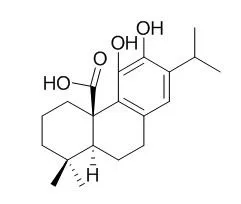

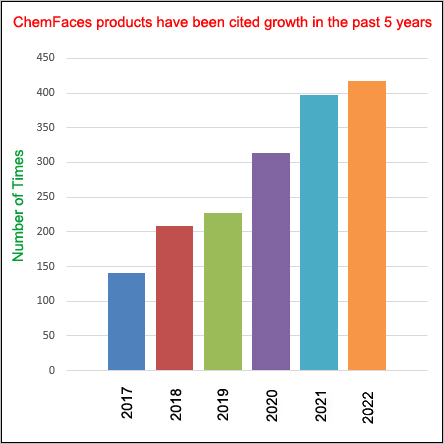
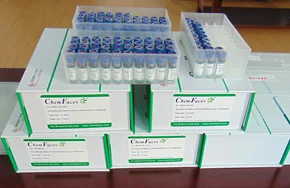
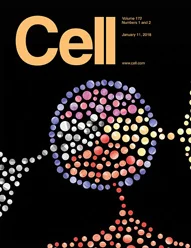 Cell. 2018 Jan 11;172(1-2):249-261.e12. doi: 10.1016/j.cell.2017.12.019.IF=36.216(2019)
Cell. 2018 Jan 11;172(1-2):249-261.e12. doi: 10.1016/j.cell.2017.12.019.IF=36.216(2019)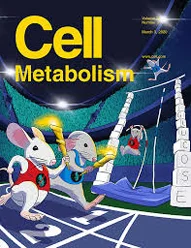 Cell Metab. 2020 Mar 3;31(3):534-548.e5. doi: 10.1016/j.cmet.2020.01.002.IF=22.415(2019)
Cell Metab. 2020 Mar 3;31(3):534-548.e5. doi: 10.1016/j.cmet.2020.01.002.IF=22.415(2019)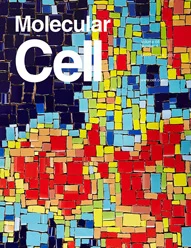 Mol Cell. 2017 Nov 16;68(4):673-685.e6. doi: 10.1016/j.molcel.2017.10.022.IF=14.548(2019)
Mol Cell. 2017 Nov 16;68(4):673-685.e6. doi: 10.1016/j.molcel.2017.10.022.IF=14.548(2019)